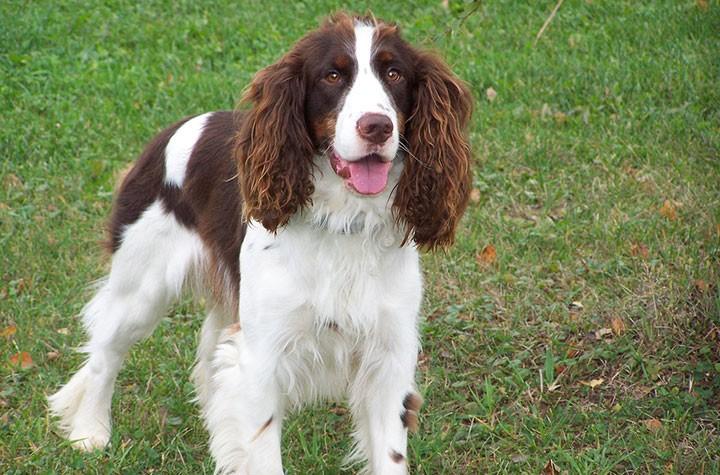
As hunters, we know that our gun dogs are more than just pets—they are our partners in the field, our loyal companions, and a crucial part of our hunting success. Ensuring they receive the best nutrition is vital for their health, performance, and longevity. This article will guide you through selecting the best dog food for gun dogs, taking into account their unique nutritional needs and the top brands in the market.
Understanding the Nutritional Needs of Gun Dogs
Gun dogs have high energy requirements due to their active lifestyle. They need a diet rich in protein for muscle maintenance and repair, essential fats for sustained energy and a healthy coat, and a balance of vitamins and minerals for overall health and performance. Hydration is also crucial, and a diet that supports proper hydration is important.
Key Ingredients to Look for in Your Gun Dog’s Diet
When choosing food for your gun dog, you need to look for the following key ingredients:
- Quality Protein Sources: Chicken, beef, fish, and other high-quality meats provide the necessary amino acids for muscle repair and maintenance.
- Healthy Fats: Omega-3 and omega-6 fatty acids are essential for energy, skin, and coat health.
- Complex Carbohydrates: Ingredients like brown rice and sweet potatoes offer sustained energy without the spikes and crashes associated with simple carbs.
- Fruits and Vegetables: These provide essential vitamins, minerals, and antioxidants to support your dog’s immune system.
- Avoid Fillers and Artificial Additives: Stay away from dog foods that contain fillers like corn, wheat, and soy, as well as artificial colors, flavors, and preservatives.
Reviewing Top Dog Food Brands for Gun Dogs
Choosing the right brand can be daunting, but here are some top-rated options to consider:
- Purina Pro Plan Sport
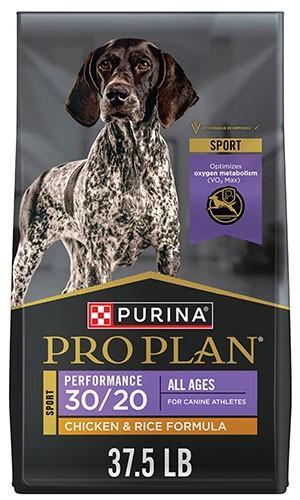
Purina Pro Plan Sport is formulated specifically for highly active dogs. It offers high protein content, primarily from real meat. It also includes vital fats and carbohydrates to support endurance, muscle maintenance, and overall health. The formula is developed to promote optimal athletic performance and recovery. It is a good choice for gun dogs.
Pros:
- High-quality protein sources – Real meat as a first ingredient
- Balanced nutrition – Suitable blend of protein, fats, and carbohydrates
- Joint support – Includes glucosamine and omega-3 fatty acids
- Multiple formulas – Offers specific formulas for different life stages and activity levels
- Positive customer reviews – Well reviewed by dog owners and trainers
Cons:
- Contains grains – Some formulas include corn and rice which may not suit all dogs due to sensitivities.
- Salt content- Some formulas have higher salt content
- Price – Grain-free and high-quality ingredient formulas can be more expensive.
“As you might have guessed from the word “SPORT” in the title, this food is designed for active pups. It has quite a bit of protein to build lean muscles, but it’s also high in calories, so your dog will need to be a go-getter to keep the pounds off.” – Hepper.com.
- Victor Hi-Pro Plus (in-season) and Victor Professional (off-season)
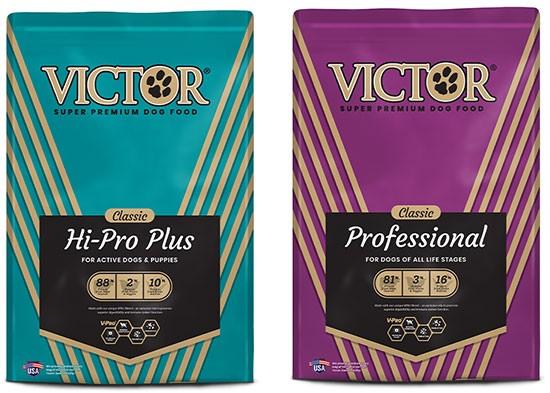
Victor offers different formulas for varying activity levels. The Professional formula is great for off-season maintenance, while the Hi-Pro Plus provides the extra energy needed during the hunting season.
Pros:
- Digestibility – High-quality ingredients ensure good digestion and nutrient absorption
- Balanced nutrients – Suitable for maintenance during the off-season to prevent unnecessary weight gain
- Cost-effective – Generally more affordable compared to other high-performance formulas
Cons:
- Limited availability – Might be difficult to get in some areas
- Lower protein and fat (Victor Professional) – May not be sufficient for some dog breeds
- Higher calorie content (Victor Hi-Pro Plus) – Not suitable for less active periods as it can lead to weight gain.
“We particularly recommend this food for highly active dogs. It contains high levels of protein, which are vital for muscle function. Therefore, dogs that use their muscles a lot may benefit most from this food.” – A-Z-Animals.com
- Kinetic Dog Food
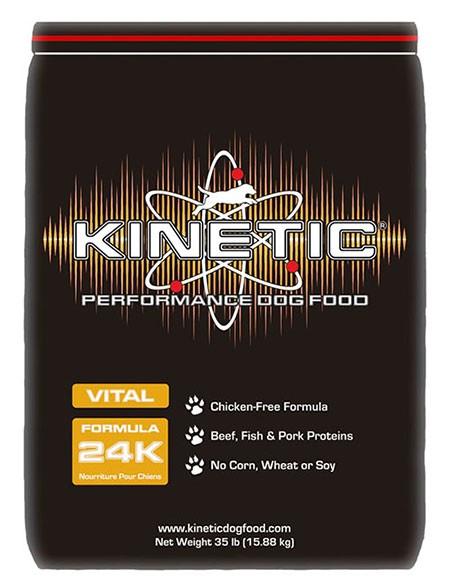
Kinetic Dog Food is designed for working and sporting dogs, providing balanced nutrition with high protein and fat content to sustain energy and muscle health.
Pros:
- High in protein and fat content – High protein to support muscle maintenance and high fat content for sustained energy and healthy skin and coat.
- No Artificial additives – Free from artificial colors, flavors, and preservatives
Cons:
- High calorie content – There is potential for weight gain if the dog is not active enough.
- Plant-based protein – Some recipes contain plant-based protein sources.
- Inclusion of by-products – Some formulas include chicken by-product meal, which may be viewed negatively despite its high protein content.
“Kinetic Performance is a grain-inclusive dry dog food using a notable amount of named meat and by-product meals as its main source of animal protein, thus earning the brand 4.5 stars. – Dog Food Advisor
- American Natural Premium
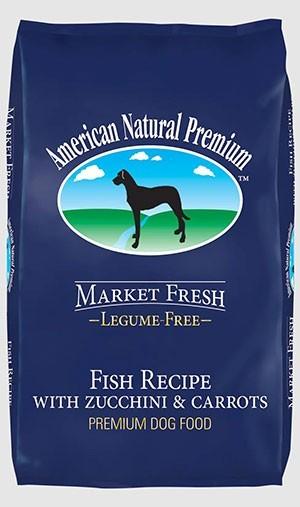
American Natural Premium (ANP) offers holistic, natural ingredients, focusing on high-quality protein and nutrient-rich components without unnecessary fillers.
Pros:
- Holistic ingredients – Natural and wholesome ingredients
- No artificial additives – No artificial flavors, colors, and preservatives
- Variety of formulas – Offers specific recipes for different life stages and dietary needs, including grain-free options.
Cons:
- Price – Generally priced higher than average due to the quality of ingredients
- Protein source – Some recipes include plant-based proteins which are not ideal for dogs.
- Availability – Difficult to find in physical stores
“While the premium pricing of American Natural Premium’s products may pose accessibility challenges for some pet owners, the tangible benefits of feeding pets such a carefully developed diet are clear and significant. Pet owners are encouraged to assess their pets’ unique nutritional requirements and seek professional veterinary advice to make the most suitable dietary choices. American Natural Premium stands out as a commendable option in the pet food market, offering a well-rounded approach to pet nutrition that aligns with the needs of environmentally conscious consumers and their beloved pets.’ – Dog Food Network
- Fromm
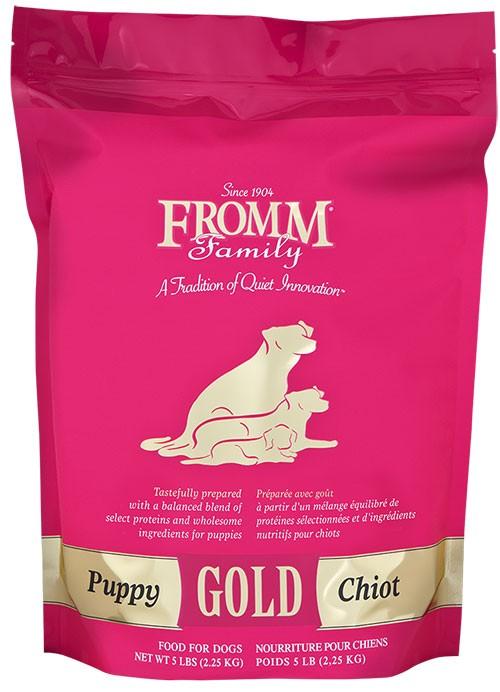
Fromm is known for its high-quality ingredients and meticulous preparation. Their formulas provide balanced nutrition with a focus on natural, wholesome components.
Pros:
- High-quality ingredients – Uses premium meat and fish as primary source of protein.
- Probiotics and Omega fatty acids – Their formulas are enhanced with probiotics for digestive health and salmon oil for omega-3 fatty acids
- Whole Grains – Include whole grains like brown rice, barley, and oatmeal, which are beneficial for providing energy and supporting digestion.
Cons:
- Premium price range – Expensive compared to other brands
- Lack of specialized diet – Do not offer prescription diets
“Fromm certainly has no shortage of recipe options for owners that have more specific needs. The company makes it really easy to break down these needs on their website. They offer a variety of premium dry kibble, premium wet food, and even a great choice of dog treat options.” – Dogster
- Black Gold
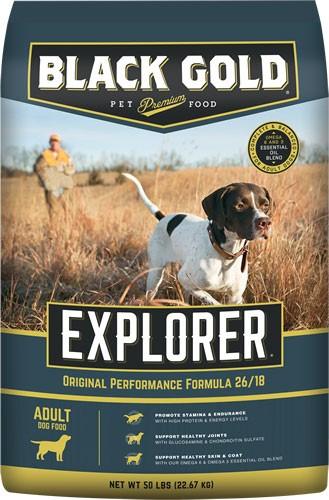
Black Gold dog food is formulated for high-performance dogs, offering balanced nutrition with a focus on protein and fat content to support active lifestyles.
Pros:
- Balanced for high-performance dogs – Uses quality meat meals and fats providing essential nutrients
- Good value for money – Priced below the average market for premium dog foods,
- Digestive Health – Fortified with probiotics
- Variety of options – Offers grain-free and grain-inclusive options catering to different dietary preferences.
Cons:
- Potential allergens – Formulas includes chicken that may not be suitable for dogs with chicken allergies
- Grain-free concerns – Grain-free options contain peas and potatoes that is linked to heart disease in some studies.
“Marketed as a premium dog kibble, Black Gold Explorer Dog Food contains some nutritional nuggets that are sometimes hard to find in other dog foods, such as prebiotics, probiotics, and healthy grains.” – Hepper
Feeding a Raw Meat Diet to Gun Dogs
Feeding a raw meat diet (BARF – Biologically Appropriate Raw Food) to gun dogs is a popular choice for many hunters, aiming to mimic the natural diet of wild canines. This diet can offer numerous benefits. However, it also comes with certain risks and challenges.
Ultimately, unless you’re committed to feeding a raw meat diet, it is best to stick with a good quality dog food.
Benefits of a Raw Meat Diet
- Improved Digestion: The high moisture content and natural enzymes in raw food aid digestion.
- Healthier Skin and Coat: Omega-3 and omega-6 fatty acids in raw meat enhance skin and coat health.
- Cleaner Teeth: Chewing raw bones helps reduce plaque buildup.
- Increased Energy Levels: Many dogs have higher energy and stamina on a raw diet.
- Allergy Reduction: Some dogs with food sensitivities to processed kibble find relief on a raw diet.
Risks of Feeding a Raw Meat Diet
- Bacterial Contamination: Raw meat can carry harmful bacteria like Salmonella and E. coli, requiring careful handling.
- Nutritional Imbalances: Properly balancing a raw diet is crucial to avoid deficiencies or excesses in nutrients.
- Choking Hazards: Raw bones can pose choking risks or cause intestinal blockages.
- Time and Effort: Preparing a balanced raw diet is time-consuming and requires commitment.
Components of a Balanced Raw Meat Diet
When feeding a raw meat diet, it is important to include various components including:
- Muscle Meat: Essential for proteins and fats.
- Bones: Provide calcium and phosphorus; always use raw bones.
- Organs: Nutrient-dense organs like liver and kidney.
- Supplements: Additional supplements may be needed for complete nutrition.
Considerations for Feeding a Raw Diet
To prevent nutritional imbalances and other health risks, it is necessary to
- Consult a Veterinarian: Before starting a raw diet, seek advice from a veterinarian or a canine nutritionist to ensure the diet is balanced and appropriate for your dog’s specific needs.
- Practice Safe Food Handling: Implement strict hygiene practices to avoid bacterial contamination. This includes thoroughly cleaning surfaces and utensils, storing raw meat at the correct temperatures, and washing hands after handling raw food.
- Monitor Your Dog’s Health: Schedule regular veterinary check-ups to monitor your dog’s health. Blood tests and physical exams can help detect any potential nutritional deficiencies or health issues early on.
- Gradually Transition to Raw Food: When switching from commercial kibble to a raw diet, introduce raw food gradually. Start by mixing small amounts of raw food with the current diet and slowly increase the proportion of raw food over several weeks to allow your dog’s digestive system to adjust.
By taking these steps, you can help ensure that your gun dog thrives on a raw meat diet, maintaining optimal health and energy levels.
Changing Food During Off-Season
During the off-season, the dietary needs of gun dogs often change as their activity levels decrease. It’s essential to adjust their food intake to prevent weight gain and ensure they continue to receive balanced nutrition. Switching to a diet with lower calorie content can help maintain a healthy weight. Incorporating more vegetables and reducing the portion sizes of high-fat and high-protein foods can be beneficial. Additionally, this period is an excellent time to focus on foods that support joint health and overall well-being, preparing them for the next active season.
Gradually changing your dog’s diet during the off-season is necessary for preventing digestive upset. Start by mixing the new food with their current diet, gradually increasing the proportion of the new food over the course of one to two weeks. Monitor your dog for any signs of digestive issues, such as diarrhea or vomiting, and consult with a veterinarian if any problems arise. This careful transition helps ensure your gun dog adapts smoothly to the new diet while maintaining optimal health and readiness for the upcoming hunting season.
Tips for Choosing the Best Dog Food for Gun Dogs
- Consider Age and Activity Level: Puppies, adults, and senior dogs have different nutritional needs. Adjust their diet based on their age and activity.
- Consult a Veterinarian: Get personalized recommendations based on your dog’s specific health needs.
- Gradual Transition: Introduce new food slowly to avoid digestive upset.
- Monitor Health and Performance: Regularly check your dog’s weight, energy levels, and overall health to ensure their diet is meeting their needs.
Common Mistakes to Avoid
- Feeding Human Food or Table Scraps: This can lead to obesity and nutritional imbalances.
- Overfeeding or Underfeeding: Follow the recommended serving sizes and adjust based on your dog’s activity and body condition.
- Ignoring Specific Dietary Needs or Allergies: Be mindful of any allergies or specific dietary requirements your dog may have.
- Choosing Based on Price Alone: Quality should be the primary consideration, not cost.
Choose the Food That’s Right for Your Gun Dog
Picking the right dog food for your gun dog is essential for optimum health, performance, and longevity. Ensure your hunting partner remains in peak condition. No matter what dog food you pick, always make sure you are giving them the nutrition that they need. It will all pay off in the field and beyond.
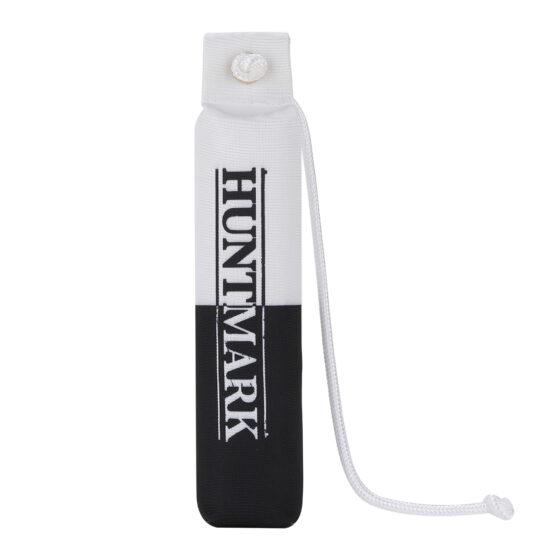
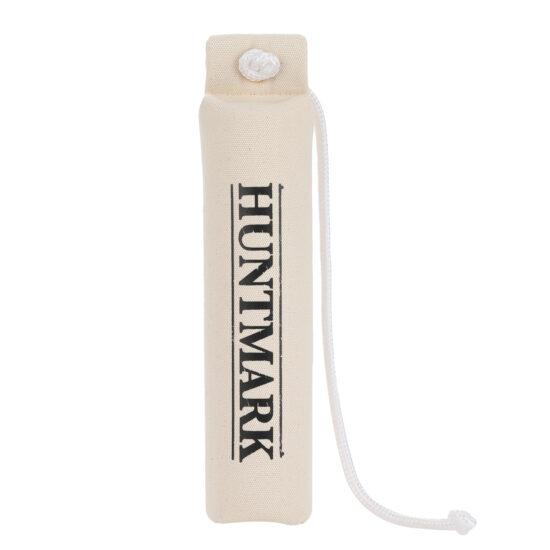
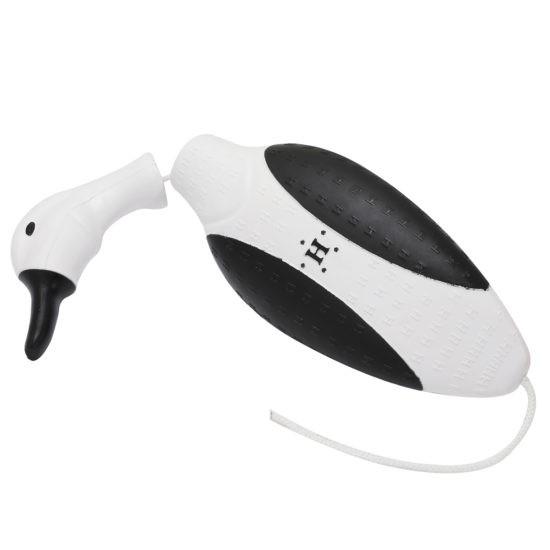
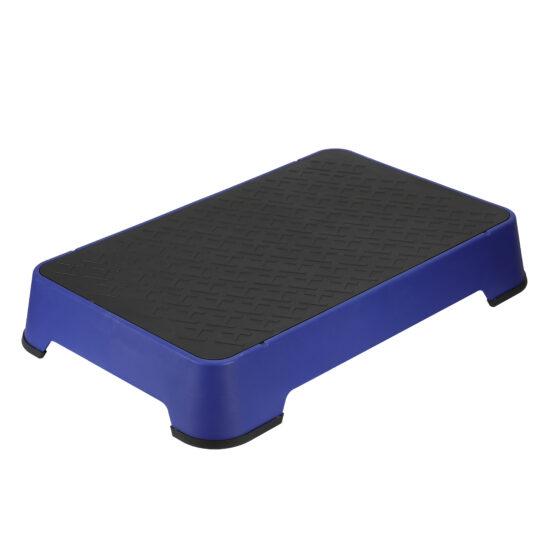



Leave a Reply